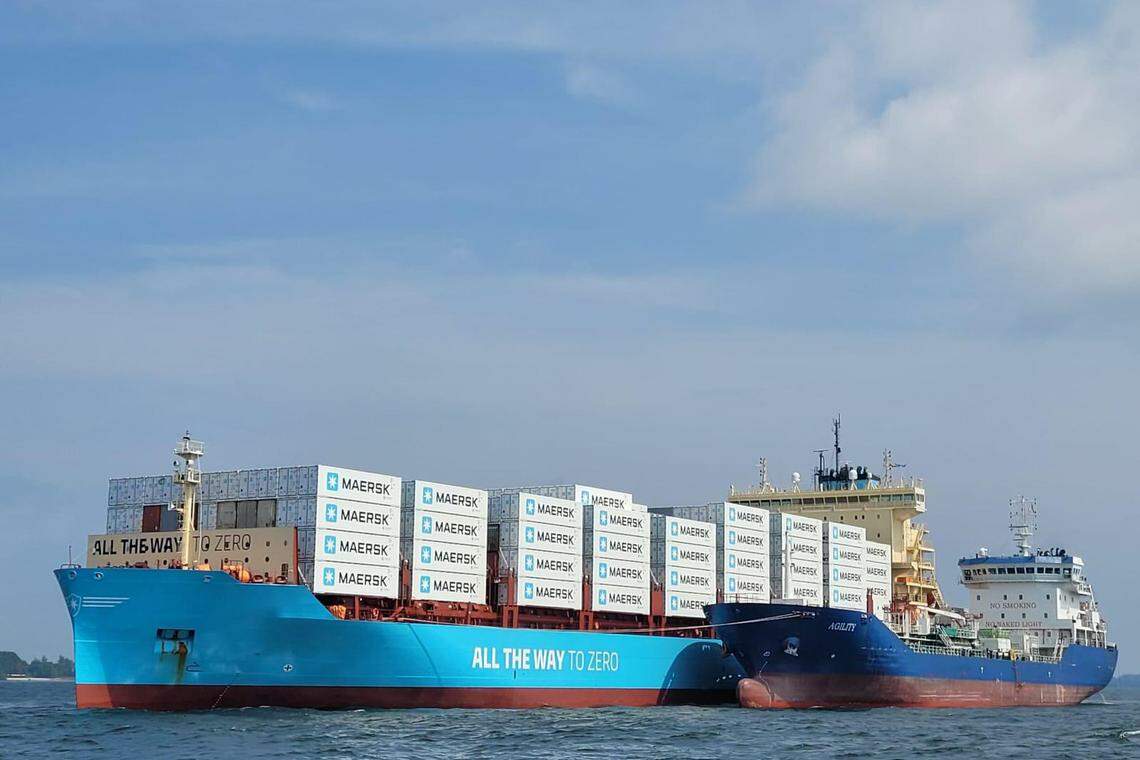IN ITS move towards greener marine fuels, Singapore will open licence applications for the maritime supply of methanol by end-2024, and select a lead developer for an ammonia project on Jurong Island by early 2025.
Licensing is the first step in methanol becoming commercially available as a fuel, while the Jurong Island project paves the way for the use of ammonia in bunkering and electricity generation.
Bunkering is the supply of fuel to maritime vessels, with Singapore being the world’s largest bunkering hub. Methanol and ammonia are cleaner alternatives to the petroleum-derived fuel oil currently used by most marine vessels.
The Maritime and Port Authority of Singapore (MPA) announced the moves at Singapore Maritime Week on Wednesday (Apr 17).
For methanol bunkering, MPA launched an expression of interest (EOI) in December and has since reviewed the 50 submissions received.
The exercise is not a tender for supplying methanol. Rather, the submissions received will inform Singapore’s development of a methanol bunkering regulatory framework, in preparation for commercial adoption.
A NEWSLETTER FOR YOU
ESG Insights
An exclusive weekly report on the latest environmental, social and governance issues.
MPA said that these regulations will be finalised “in the coming months” and licence applications for methanol bunkering will open by the end of 2024.

The government is expected to publish its methanol standards by 2025.
“Over 60 regional and international companies comprising energy companies, fuel suppliers, traders, bunker operators and storage companies, participated in the EOI, signalling clear business confidence in Singapore as a key offtake location for methanol by international shipping,” said the authority.
Several of the projects submitted are already in operation or have crossed the final investment decision stage. The projects at this stage of development have, in total, the potential to supply over one million tonnes of methanol per annum.
In an earlier study, MPA concluded that demand for methanol bunkering in Singapore could exceed one million tonnes per annum before 2030.
Ammonia for bunkering, power generation
By the first quarter of 2025, MPA and the Energy Market Authority will select a lead developer for a project supplying low or zero-carbon ammonia for power generation and bunkering on Jurong Island.
When completed, the project will generate 55 to 65 megawatts of electricity and provide a bunkering capacity of at least 100,000 tonnes per annum.
Six consortiums were shortlisted by MPA and EMA in a restricted request for proposal in October 2023.
Separately, MPA is inviting shipping companies to participate in a non-binding request for quotation for the transport of ammonia – with insurance – to Singapore. Submissions for this close on May 17, 2024.
Cleaner marine fuels are needed to reach carbon-emissions goals set by the International Maritime Organization: making the maritime industry net zero around 2050, with interim reduction targets of at least 20 per cent from 2008 levels by 2030, and 70 per cent from 2008 levels by 2040.


